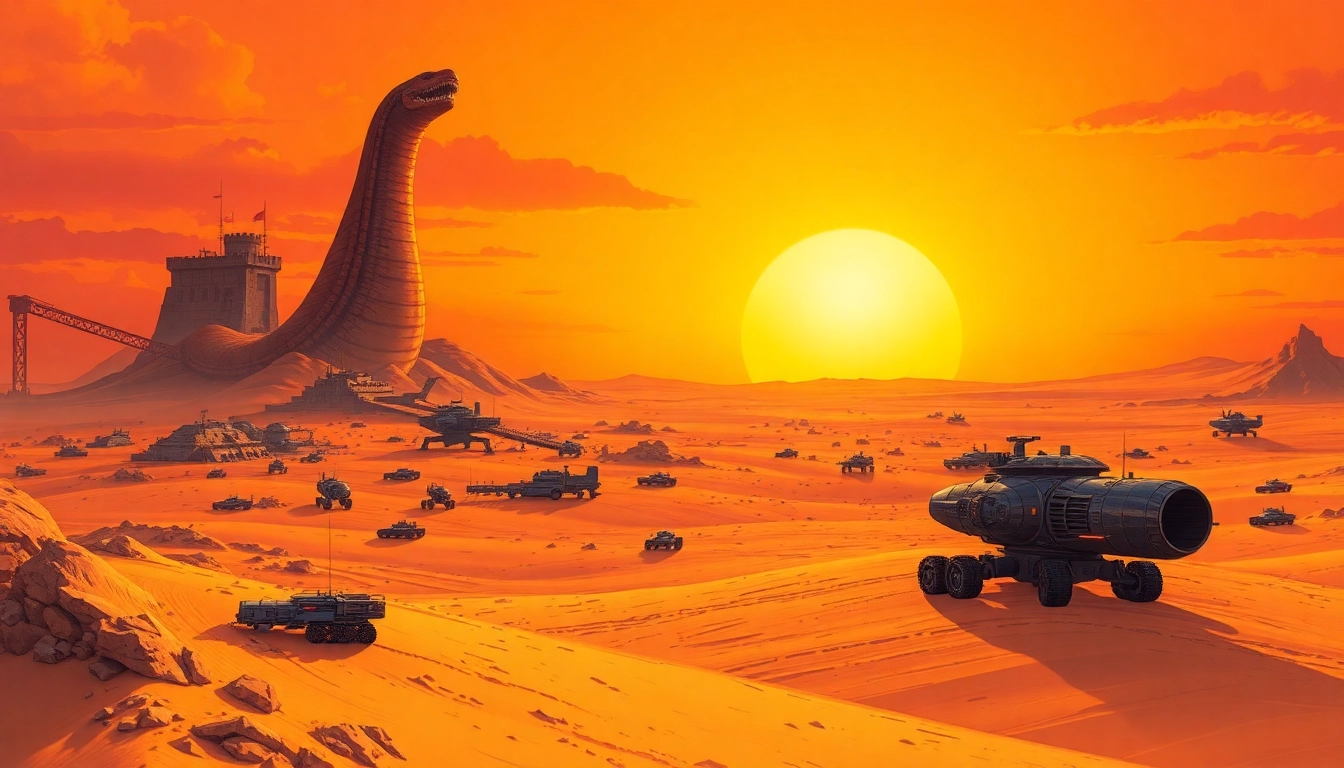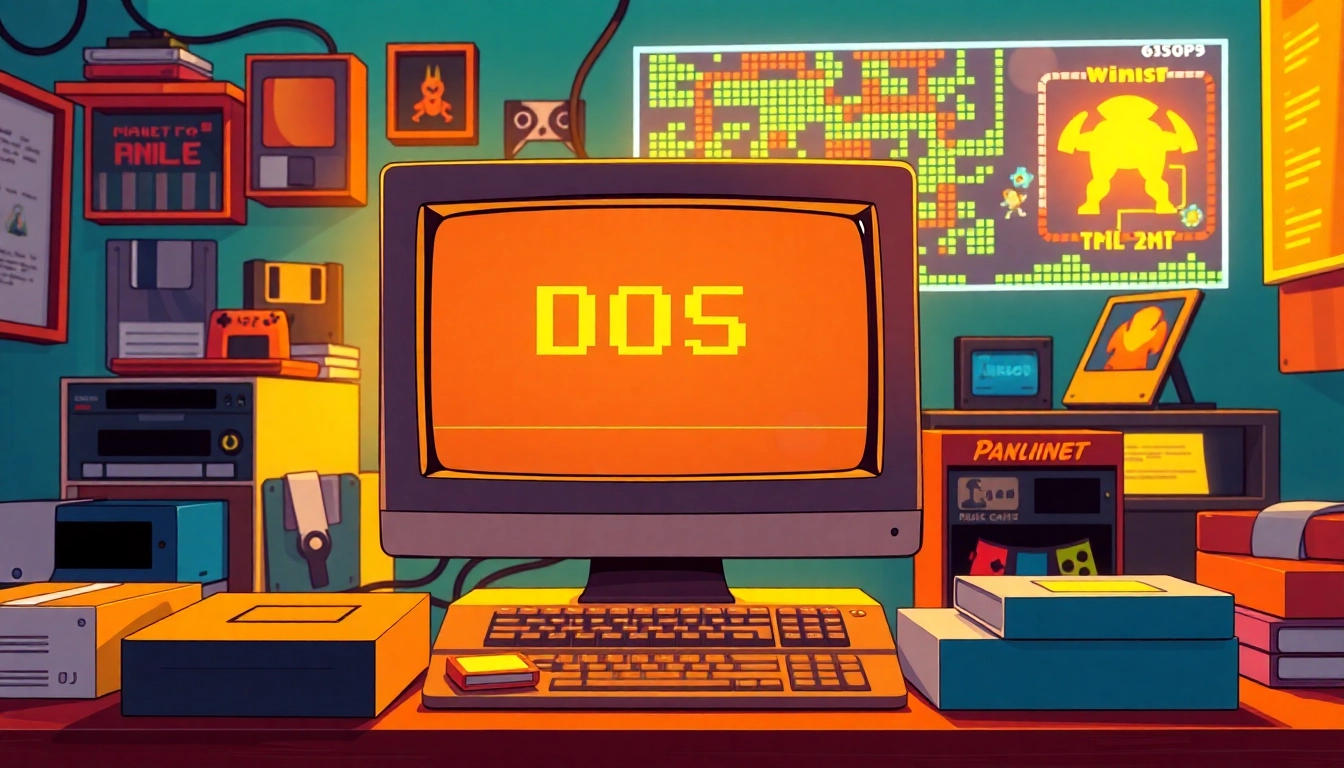
Introduction to Dune 2 Game
Dune II: The Building of a Dynasty, commonly referred to as the dune 2 game, marked a significant milestone in video gaming history. Released in 1992, it established foundational mechanics for the real-time strategy (RTS) genre that remain influential to this day. Developed by Westwood Studios and published by Virgin Games, it was not only a sequel to the earlier game Dune but also a revolutionary title that shaped the future of strategy games. In this article, we will explore the origins, gameplay mechanics, graphics, community impact, and modern availability of Dune 2, illuminating its legacy within the realm of video games.
Overview of the Game’s Origins
The early 1990s were a transitional period for video games, with many developers experimenting with mechanics that would provide interactive experiences beyond simple arcade games. Dune II was inspired by the works of Frank Herbert, particularly the Dune novels, utilizing the desert planet of Arrakis as its setting. Recognized for its strategic depth, Dune II introduced players to a resource management system revolving around the extraction of spice, a precious commodity necessary for player progression and conflict.
Dune II’s design and mechanics were spearheaded by key figures at Westwood Studios including Brett Sperry and Joseph Bostic. They sought to create a game that not only retained the themes of the Dune narrative but also pushed the envelope for gameplay complexity—thus establishing the groundwork for modern RTS games.
Key Features of Dune 2 Game
- Three Unique Factions: Players can align with one of three factions—House Atreides, House Harkonnen, or House Ordos—each with distinct units, strengths, and playstyles.
- Resource Management: Successfully extracting spice and utilizing it wisely allowed players to build and expand their bases effectively.
- Base Construction: Dune II features a complex base-building mechanic, permitting players to design and implement strategic layouts tailored for defense and production.
- Real-Time Combat: Unlike turn-based strategy games, Dune II pushes players into real-time decision-making, demanding rapid responses to changing battle dynamics.
- Innovative AI: The game’s AI adapts and presents challenges, ensuring that no two encounters are the same as it reacts to player tactics.
Impact on Real-Time Strategy Genre
Dune II is widely regarded as the progenitor of the real-time strategy genre. Prior to its release, video games had primarily focused on turn-based mechanics or simplistic game structures. By merging resource management, base construction, and real-time combat into a cohesive experience, Dune II established several conventions that have become standard in RTS games that followed.
This influential game served as a model for later titles such as Command & Conquer and StarCraft, demonstrating the viability of the RTS format as a platform for diverse storytelling and gameplay complexity. It set benchmarks for unit variety, resource management, and strategic diversity, elements that are hallmarks of the genre today.
Gameplay Mechanics of Dune 2 Game
Resource Management and Strategy
At the heart of the Dune II experience is its engaging resource management system. Players must strategically deploy their units to safely harvest spice while fending off rival factions and the planet’s native sandworms. This focus on resource management drives players to make tactical decisions that can significantly affect their gameplay experience.
Effective spice harvesting can determine the pace of a player’s success, as securing large quantities of spice allows for the construction of advanced units and structures, providing a competitive edge. Furthermore, players must continually balance immediate needs against long-term strategy, as resources are finite and strategic planning is required to ensure success.
Base Construction Dynamics
The base construction aspect of Dune II introduces players to intricate mechanics that combine strategic planning with resource allocation. Players begin with a construction yard where they can build essential structures such as barracks, factories, and refineries. The layout of these structures profoundly influences the player’s efficiency in both resource gathering and defense.
Strategically placed buildings can provide optimal coverage against enemy units while ensuring that units are produced in a timely manner. As players advance through levels, they unlock more buildings and units, giving way to a progressively complex and rewarding gameplay experience.
Unit Types and Their Roles
Dune II features a diverse array of unit types, each designed to fulfill specific roles within the game dynamics. These include infantry, vehicles, and air units, each with unique strengths and weaknesses that players must leverage strategically. For example:
- Infantry Units: These are versatile and can capture buildings or scout enemy positions, though they are generally ineffective against heavily armored vehicles.
- Vehicle Units: Tanks and other armored vehicles serve as the backbone of military engagement, offering firepower and durability on the battlefield.
- Air Units: These provide reconnaissance and powerful strike capabilities, allowing for fast and strategic assaults on enemy forces.
Understanding how to deploy different unit types effectively is key to achieving tactical superiority on the battlefield.
Graphics and Presentation in Dune 2 Game
Visual Style and Artistic Elements
Dune II employs a distinctive pixel art style that, while primitive by modern standards, effectively captures the essence of Herbert’s Dune universe. The design of units, buildings, and the desert landscape contribute significantly to the game’s atmosphere.
The color palette reflects the harsh and barren environment of Arrakis, with sandy browns and blues dominating the landscape, while vibrant hues highlight vital elements such as spice refineries and military units. This design choice immerses players into the world of Dune, further enhancing the thematic elements of the game.
Audio and Sound Design
The sound design of Dune II, spearheaded by composer Frank Klepacki, enhances the gameplay experience dramatically. The atmospheric sound effects and music score establish tension, urgency, and the thematic depth of the Dune universe. Each faction has unique sounds associated with their units and actions, offering further immersion into the strategic environment.
Players report that the music and sound elements continue to evoke nostalgia, drawing them back into the game even after years away from it. Properly timed signals and cues guide player decisions on resource gathering and combat, highlighting the importance of audio as an integral gameplay component.
Technological Innovations
At the time of its release, Dune II showcased progressive technological innovations within the gaming industry. Its innovative approach to real-time strategy combined with effective use of artificial intelligence exemplified a shift in how games approached player engagement and interaction.
In particular, Dune II’s isometric viewpoint offered players a clear perspective of the battlefield, allowing for improved unit visibility and strategic planning. This novel perspective, paired with GUI elements to manage units and resources, laid the foundation for many future strategy titles.
Community and Legacy of Dune 2 Game
Fan Base and Modding Scene
The community surrounding the Dune II game has thrived over the years, with a dedicated fan base that continues to cherish its innovations. Fans have created numerous mods and remakes, injecting fresh life and new features into the classic experience. The modding scene signifies the enduring appreciation for Dune II’s gameplay mechanics and its significant role in video game history.
Various fan sites and forums allow players to share experiences, strategies, and modified versions of the game, while engaging discussions surrounding the storyline and lore of the Dune universe take place in parallel. This demonstrates how a passionate community can breathe new life into a classic title long after its release.
Influence on Successors and Clones
Dune II’s legacy is evident in the multitude of games that followed in its footsteps. Titles such as Command & Conquer and Warcraft owe their foundational mechanics to the innovations introduced by Dune II. These games built upon the resource management, strategic combat, and base-building elements popularized by Dune II, leading to the widespread embrace of real-time strategy games.
As the genre evolved, many game developers cited Dune II as an inspiration, showcasing its profound impact on subsequent game design. This lasting influence has contributed to the continual reinvention of the RTS genre, pushing boundaries and expanding the scope of strategy gameplay.
Retrospectives from Gamers and Critics
As time goes on, retrospectives of Dune II reflect on its pioneering status in the RTS genre. Players and critics alike have often referred to it as a “game-changer,” celebrating its complexity, enjoyable gameplay, and strategic depth. Reviews from various publications emphasize its significance, highlighting particular elements such as unit diversity, memorable soundtracks, and engaging gameplay mechanics.
Many gamers fondly recall their first experiences with Dune II, reminiscing about the challenges and excitement it brought—further solidifying its reputation as a classic that resonates with both veteran and fledgling players alike.
Where to Play Dune 2 Game Today
Platforms and Accessibility
Dune II has been made accessible through various platforms since its initial release, including DOS and Amiga systems. In the current gaming landscape, modern players can experience Dune II through emulators or abandonware websites that host retro titles. Its continued availability is a testament to the game’s place within gaming history.
Additionally, updates and patches created by the community make the game enjoyable on more contemporary hardware, ensuring that new generations can appreciate this classic title without the limitations of legacy systems.
Modern Alternatives and Remakes
In recent years, remakes and spiritual successors of Dune II have emerged. These projects aim to modernize the classic gameplay while retaining the elements that made the original so beloved. Fans have taken to platforms like Kickstarter to support these initiatives, showcasing the enduring appeal of Dune II’s mechanics and themes.
These modern adaptations provide new players with an introduction to the genre, while older fans can relive the nostalgia of Dune II with enhanced graphics and updated mechanics.
Engaging with the Dune 2 Community
For those seeking to immerse themselves more deeply in the Dune II experience, engaging with its community is a rewarding endeavor. Various online forums, social media groups, and fan sites allow players to share their experiences, strategies, and modifications. Additionally, participating in discussions about gameplay and lore fosters a sense of camaraderie among fans.
Whether players wish to dive into modding, share strategies, or discuss theories regarding the Dune universe, the flourishing community remains a vital part of the Dune II experience and legacy.





